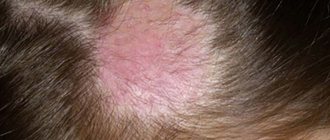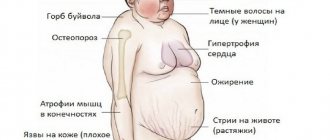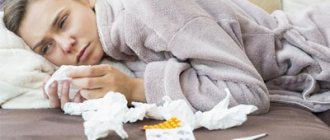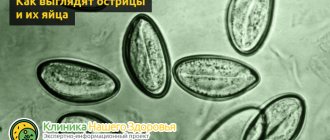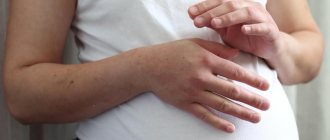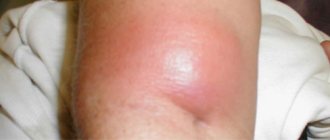Warts are not dangerous to health, but they cause aesthetic discomfort and can also interfere with everyday life. Therefore, everyone needs to know the causes of the problem and methods to combat them.
Types of warts
Flat
Flat (plane warts), they are also called youthful.
They look like clearly defined plaques, often round in shape, flesh-colored, light brown or pink. Diameter – from 1 to 5 mm, slightly raised above the skin. They are located mainly on the back of the hands, the skin of the face or the legs.
Ordinary
Common (common warts), the second name is vulgar, or simple warts.
They also look like plaques rising above the skin, but their surface is villous. Sizes range from 1 to 10 mm. They are most often located on the hands. Treatment is usually not required and disappears on its own within two years.
Plantar
Plantar warts (plantar verrucae or plantar warts) are a type of common wart.
They are a round-shaped compaction, small at first, the same color as the skin. Later, plantar warts acquire a grayish-yellow color, old warts are dirty gray in color and are very painful when walking. They are localized in areas that experience strong shoe pressure. The skin of heavily sweating feet is especially prone to the formation of plantar warts.
Condylomas acuminata
Genital warts
They are small, soft, pink nodular formations on a reddish or flesh-colored stalk. They are located on the genitals, in the intergluteal and inguinal folds. They are transmitted through sexual contact and require removal as they can grow to large sizes. Often, condylomas accompany other infectious diseases of the genitals. Statistics show that condylomas appear in women predisposed to cervical cancer.
Senile warts
They are also called keratomas, seborrheic warts, basal cell papillomas. This type of wart does not have a viral etiology. They are most often located on the chest, but are also found on the neck, face, extensor surface of the forearms, back of the hands and other places of the skin, except for the soles of the feet and surfaces of the hands.
Multiple formations of senile warts are called seborrheic keratosis. It develops slowly - over decades.
The color and shape of senile warts depends on the stage of development of keratosis. At the initial stages, keratomas look like small flat spots of yellow or pink color with a rough surface and clear edges characteristic of warts.
Later they begin to become covered with greasy crusts, on which cracks appear over the years. The crusts can reach up to 2 cm in thickness.
At later stages, senile warts transform into mushroom-shaped formations of black or dark brown color, sometimes with the inclusion of black comedo-like dots consisting of the stratum corneum of the epithelium. The boundaries of keratomas become blurred and the consistency is soft, which is why they can be confused with melanoma. Less commonly, senile warts are dome-shaped, with a smooth surface containing keratin inclusions, resembling tiny (up to 1 mm) black or white pearls.
Youth
This is a type of wart on the body that can appear mainly in teenagers. From the name it is clear that the appearance of a growth is associated with hormonal changes, that is, with adolescence. Girls and boys are equally likely to become infected. The formations may cause itching. If you scratch a wart, you can contribute to the spread of the virus, and it will manifest itself in another part of the body. It should be treated by a competent doctor who understands the cause of the growths.
In appearance, warts can be oval or round. As for color, it can be brownish, yellow or pink. The height of the growth is 1-2 mm. Most often, warts appear on the face, neck, feet and hands. Sometimes they spread to the soles and palms. The formations are very small, so they are practically invisible, but they itch a lot. You can become infected through cuts, minor skin lesions or hangnails.
Treatment of warts
Unfortunately, none of the treatment methods existing today eliminates the main cause of warts – infection with the papilloma virus. Their effectiveness ranges from 60 to 95%, and the probability of relapse is about 30%.
But the probability of warts disappearing on their own (especially in children) is quite high - up to 50%, so it is not always necessary to rush to treat warts. Moreover, it should be remembered that the more effective the treatment method, the greater the likelihood of scars forming on the skin. It is always worth starting treatment with less aggressive methods.
Useful video
The video once again talks about the types of warts, including those on the hands:
Warts on the hands occur in a large number of people of different genders and ages. Anyone can become infected with them. If neoplasms appear, you should consult a doctor and undergo treatment. Personal and regular hygiene and a healthy lifestyle are a preventive measure against warts.
Search for a doctor based on the topic of the article
- About
- Latest Posts
Natalia Simonova
Therapist, surgeon at the Federal State Budgetary Institution Central Clinical Hospital with the Polyclinic of the Administration of the President of the Russian Federation
Graduated from the Pirogov Moscow State Medical University
Modern medical methods for treating warts
Electrocoagulation
Electrocoagulation is the removal of warts using high frequency electric current. Under local anesthesia, the wart is cut off with a special loop, and a crust forms in its place, which peels off after a week.
Cryodestruction
Cryodestruction - removal of warts with liquid nitrogen. After freezing with nitrogen, a blister forms at the site of the wart in about an hour, which dries out in 5 to 7 days. The crust peels off after about 14 days, leaving a pink spot in its place. Plantar warts are removed in several stages, at two- or three-day intervals.
Surgical removal
Surgical removal - performed under local anesthesia only in cases where the warts are large. A flat, light scar remains at the site of the wart.
Laser coagulation
Laser coagulation – layer-by-layer laser removal under local anesthesia. The depression that remains at the site of the wart levels out after 14–21 days. If plantar warts are removed in this way, you will have to limit the load on your feet during the recovery period.
Chemical methods
Chemical methods - removal with alkali or caustic acids. This method is used relatively rarely, since it is quite painful and there is a high risk of infection and damage to adjacent tissues. Salicylic acid has a more gentle effect.
Age
We have already figured out what types of warts there are, all that remains is to talk about their special subspecies. We are talking about age-related growths that appear in a person during aging. To counter their appearance, doctors strongly recommend consuming foods containing vitamin C. It slows down the development of warts. The danger is that the neoplasms are very similar to those that arise from cancer
This is why it is very important to seek professional help.
As for other reasons for the appearance, these include prolonged exposure to the sun, lack of vitamins or seborrhea. The formations have a brown, gray or black light. The top is covered with small scales, which can be seen if you look closely. Over time, they resemble a mushroom in shape. Most often they form on the face, neck, chest and back of the hands. Not painful and not itchy. Can also be caused by hereditary factors.
Pharmacy wart removal products
All wart removal products sold in pharmacies should be used only after consultation with a doctor - a dermatologist, urologist or venereologist. In addition to salicylic acid, you can purchase in pharmacies:
- trichloroacetic acid;
- "Papillek";
- "Verrukacid";
- "Kollomak";
- "Condyline Nycomed" Podophyllotoxin;
- "Condilin" Podophyllotoxin;
- "Solcoderm";
- "Cryopharma";
- Wartner;
- "Feresol".
- "Anti-papilloma"...
How to get rid of warts
If warts appear on the face, home treatment can also be effective. But we recommend that you first seek help from specialists. Below we suggest considering folk remedies for removing flat tumors.
Warts on a child’s face - how to remove them with celandine
Both the first and second options are capable of removing flat papilloma and are available through home-made preparation. An important point is that for treatment, the plant must be collected during the period of active growing season (flowering), which occurs in May-June.
With regard to flat warts, there are often situations when they disappear on their own.
This happens for two reasons:
- infection with one type of human papillomavirus;
- increasing immunity.
However, you should not hope for a cure by taking strengthening substances. You can get rid of flat warts in various ways. The main thing is to take into account the localization of the formation and its extensiveness.
In what cases should you urgently consult a dermatologist?
- If a flat wart suddenly begins to increase in size, then it is worth getting examined. This type of neoplasm does not change its diameter from the moment it appears.
- If you accidentally injured a wart and it began to bleed or did not heal for a long time.
- If flat warts begin to merge into one lesion.
- If the flat wart begins to change its color, especially dark brown.
All four of these signs require immediate consultation with a doctor, since they are symptoms of the most malignant neoplasm - melanoma.
Any therapy for warts is a complex measure and includes taking antiviral drugs and removing tumors. Radical removal of growths cannot be avoided if they are localized on open areas of the skin (face, neck).
Systemic antiviral therapy
To strengthen the immune system you need:
- Take a course of multivitamins ("Hexavit", "Complivit", "Alphabet");
- The use of tinctures of medicinal plants (ginseng, echinacea, eleutherococcus);
- Taking immunostimulants (“Immunal”);
- Strengthening the body - hardening and physical activity.
Important addition: Is it possible to get a tattoo with psoriasis and will this lead to progression of the disease?
You should first contact an experienced doctor who will conduct a diagnosis, including a survey, examination and testing. Only after this will it be possible to prescribe a treatment plan, because there is no standard scheme for removing growths.
A clear indication for treatment is a sudden and rapid increase in the number of lesions on the skin, as well as the specific localization of warts, which imposes restrictions on a person’s performance of movements and functions.
Treatment of flat warts is a complex undertaking. The following methods are used:
- Strengthening the immune system with levamisole. The drug has an anthelmintic effect and helps strengthen the immune system.
- To remove warts, the following keratolytic and antiviral agents are used topically: 5% salicylic-resorcinol ointment, oxolinic or terbofen ointment, ointment or cream with interferon alpha-2, 10% silver nitrate solution. Silver nitrate is not recommended for removing flat warts on the face.
- In rare cases, they resort to methods of wart removal such as cryotherapy, thermal destruction of lesions and laser removal.
When warts appear in children, in most cases the formations are simply observed due to the high probability of self-healing.
Prevention of warts
The main thing in preventing the appearance of warts is maintaining the immune system in excellent condition. In addition to this global remedy, compliance with hygiene standards and a few simple rules also helps:
- after being in public places, treat your hands with antiseptic gels or wipes if it is not possible to wash your hands with soap;
- minimize the use of objects shared with a person infected with the papilloma virus;
- Be sure to wear special shoes in baths, saunas, and swimming pools;
- use household gloves during household work, especially when using all kinds of cleaning products;
- try to buy shoes made from natural materials.
Reasons for appearance
The main and main reason for the appearance of any type of warts (photos of some of them are presented in the article) is that the human papillomavirus (HPV) is actively developing in the body. Many people can be a carrier of it for years or even their whole lives, but never know about it. The most interesting thing is that in this case you can still infect another person with the virus. How?
- Through minor damage to the skin or mucous membranes. You need to understand that these can be the smallest cuts or wounds that you won’t even notice.
- Physical contact. This is the easiest way to get infected. Close physical contact can result in several warts after a couple of months.
- Through the common use of something. This is typical for people who use a shared shower, kitchen, gym, etc. The risk of infection is very high.
- From mother to child during childbirth. It is very important that a woman monitor her health comprehensively and undergo the necessary examinations.
As for risk factors, any types of warts can appear in the following categories of people:
- Those who are promiscuous often change partners. At the same time, you can even make sure that a person is healthy or use condoms, but still get infected.
- For those who neglect the rules of personal hygiene.
- In people whose body is weakened.
The last risk group can become infected from their own virus, which is in a passive state in the body. This is why it is so important to always support the immune system.
What can contribute to the appearance of any types of warts?
- Frequent and severe stress. At the same time, they can exist on their own, but a person must be able to get out of them. If he experiences any situation very vividly and strongly, then this causes irreparable harm to his body. It is very important to vent your emotions and be able to get rid of negativity. It is useful to learn proper breathing.
- Hormonal imbalances or changes. Any hormonal imbalance, one way or another, will manifest itself on the human body. If this is not a failure, but a restructuring (in teenagers, older women), you should just wait or strengthen the immune system. Growths that arise for this reason often go away on their own.
- Physical fatigue. This is the same stress, only not for the head, but for the body. If you systematically overload yourself, you can develop chronic fatigue. That is why it is important to normalize your schedule and take care of active recreation.
- Lack of vitamins or poor diet. Very often, a person spends a lot of money on food that only fills the stomach and deprives the feeling of hunger, but brings virtually no benefit to the body. The immune system weakens and warts appear. Throughout the year you need to eat different foods, do not overeat, and do not get carried away with junk food.
- Infections and inflammations. It is a completely understandable reason that weakens the immune system.
- Unfavorable environment. Even a healthy person who leads a healthy lifestyle can develop various growths simply due to a polluted environment. Residents of especially dirty cities often encounter this. Fortunately, warts are the least of evils.
- Harmful working conditions. In this case, you can get not a harmless papilloma, but a malignant formation.
What's inside warts?
- 1 What's inside a wart?
- 1.1 Sectional structure
- 1.2 Under the microscope
- 2 Roots of a wart
- pink color;
- small and pointed;
- appear in intimate areas.
- dark shade;
- occur on the sole of the foot;
- painful.
- the most common;
- in the form of seals.
- occur on the back or chest.
- the tip of the tumor on the outer layer of the skin;
- body in the connective part of the skin;
- wart roots.
Have you been fighting PAPILLOMAS for many years without success?
Head of the Institute: “You will be amazed at how easy it is to get rid of papillomas by taking it every day.
To combat warty growths that often appear on the human body, it is necessary to understand the structure of warts and the characteristics of their appearance. Their activity is not affected by age. They occur in both children and adults. The human papillomavirus, which easily penetrates the body and practically does not manifest itself, is responsible for their activity.
The provocateur of a wart is the same, but in structure they can differ significantly.
Our readers successfully use Papilite to treat papillomas. Seeing how popular this product is, we decided to bring it to your attention. Read more here...
What's inside a wart?
Warty growths are often benign, appearing in the form of plantar, senile, flat formations and condylomas.
Types of neoplasms
| Type | Description |
| Condylomas | |
| Plantar | |
| Simple | |
| Senile |
The location of the formation directly affects its structure. For example, plantar benign neoplasms are rooted deep into the tissue and have a developed network of capillaries. This is due to the load that falls on the soles of the feet. The shaft is much smaller in hanging formations; they rise above the skin and are prone to more damage.
Return to contents
Sectional structure
Activation of the papilloma virus leads to disruption of all layers of the outer layer of the skin. The upper layer of the epidermis dies and becomes hard and rough. The growing cellular cells of a wart take on the appearance of papillae, forming papillae. Blood vessels are formed inside the papillae. With the gradual death of modified cells, new ones are formed in their place.
When the formation is cut in half, dense modified skin cells are visible, which protrude above the epidermis from above and grow into deep layers from below. Structure:
Return to contents
Under a microscope
Examining the growths under a microscope, it is clearly visible that their body penetrates deep into the layers of the skin. It is based on intensively dividing cells of the upper layer. They are wrapped in stretched blood vessels, which together with the cells form the core. This saturation with blood vessels explains frequent bleeding when the hardened area of the tumor is damaged.
The root of a wart is the core of a new growth, through which the growth can affect the body deeper and deeper. Return to contents
Wart roots
The deepest part of the formation is the root. It serves as a source of nutrition for growths. Gradually grows in the deep layers of the dermis. From above, when slightly enlarged, it looks like a small black dot. The root is a dangerous part of the growth, since it contains representatives of the infection. That is why it is not recommended to remove the formation on your own. By removing the top part, the rod can remain and will grow in depth and width.
How are growths similar and different?
It would be wrong to evaluate papillomas and warts only by appearance. In addition to the fact that these two types of neoplasms cause a lot of external inconvenience to a person, they also affect the body from the inside.
The similarities of these growths are:
both types of tumors form in the body after HPV enters there; both have an unaesthetic appearance; the route of infection is the same - contact with a patient; a high probability of contracting HPV is observed in places where there is high humidity; weak immunity contributes to rapid development in both cases;
you can get rid of them by destroying the cause; Following good hygiene and proper nutrition will help avoid infection in both cases.
There are many more differences between papillomas and warts, and they are more serious. This is due to both external signs and internal effects on the body.
The difference is as follows:
outwardly they have a different shape, size, density of formation, color from each other - this is a difference noticeable to the eye; papilloma appears in the folds of the skin, where it is damp, the wart settles on the hands, on the soles of the feet; warts can appear completely unexpectedly in some place, and then also disappear unexpectedly; in the case of papillomas, everything is different - once it appears on the body, it will never go away, and being in an uncomfortable place and constantly being injured, it requires urgent serious treatment; a wart is completely harmless, it can increase and decrease in size, and this is normal, this is how it differs from papilloma; if papilloma grows, you should urgently consult a doctor, who will most likely decide to remove it; clear boundaries are the main sign of how to distinguish a wart from a papilloma; the latter hangs on a leg and has torn edges and a rough surface; These growths also differ in treatment methods: warts can be successfully cured at home, for which both pharmaceutical and folk remedies are used; papillomas require removal in different ways (laser, high-frequency electric current, surgery, radio waves, nitrogen freezing).
85% of the population are carriers of HPV. Knowing well the similarities and differences between warts and papillomas, you can put the virus to sleep. Then it is safe. Prevention will help prevent its activation.
Despite the fact that it is not difficult to independently distinguish between a wart and a papilloma on the body, you cannot self-medicate. An outwardly completely harmless formation can be the beginning of a cancerous tumor.
Features of the structure of growths
The structure of the wart on the surface of the epidermis can be of various shapes. It depends on what type they are. There are several types:
- coralliformes,
- cone-shaped,
- threadlike,
- flat.
The color of the growth can vary from flesh-colored to dark brown. Structure: scaly, hard, dense. They may appear in several pieces or individually. This is a visual picture. And the general structure of a wart is as follows:
- upper sealed part,
- epidermis,
- dermis,
- the root of an infectious neoplasm,
- fatty fiber.
If you look at a wart under a microscope , then its root system attracts special attention.
Root base
The root base is considered to be microscopic cells that make up the granular layer. The system is equipped with blood vessels that give the root its dark color. The blood flow that flows to the bottom of the growth allows it to receive nutrition for the cells to grow.
If the wart is viewed in cross-section, the rod represents healthy vessels that have died from blockage due to compression. The more intense the root growth, the stronger its negative impact on the vascular system. As a result, many rods are formed .
If you look at the structure of papillomas in a section, you can see that they do not go deep, but are located near the dermis. It is for this reason that they are often damaged, causing them to bleed. Flat tumors are more difficult to remove.
Structure of the spine (internal wart)
An internal wart is localized on the soles of the feet or the outside of the palms. If the tumor occurs on the sole, then when walking it causes discomfort and pain to its owner. At the initial stage, the spine can be confused with a callus. But as it increases in size, it does not separate from the skin. The growth of a wart on the sole can be divided into the following stages:
- Formation in the form of a callus. There is a slight itching and pain when walking.
- After a month, a roughness with black spots appears in the middle of the formation, and at the edges the epidermis becomes denser.
- The body of the neoplasm becomes loose with many pointed papillomas. It causes pain and grows to the sides at high speed.
The width of the wart can reach 2 centimeters. The roots are often injured and begin to bleed. After this, bacteria enter the wounds and they begin to fester.
What is the reason for the appearance of warts, the etiology of their formation?
When warts appear, the cause of development is the penetration of human papillomavirus infection into the human body.
Additional Information! A person can be a carrier of the virus for a long period, but due to the absence of manifestations of pathology in the form of warts, he may not even be aware of it.
Methods of infection with the virus:
- the presence of wounds and microcracks on the skin allows the virus to penetrate inside;
- during close contact with an affected patient. Thus, most often the disease is transmitted sexually;
- the use of hygiene products and belongings of an affected person can also lead to infection with the virus;
- You can catch human papillomavirus infection in public places, such as a gym, swimming pool, bathhouse, sauna;
- if the mother is a carrier of the virus, it can be transmitted to the child during the latter's passage through the birth canal.
Important! To prevent infection of an infant with the papilloma virus, it is necessary to pay special attention to the treatment of pathology during pregnancy.
Factors contributing to the development of the disease:
- leading a chaotic lifestyle, frequent changes of sexual partners;
- neglect of hygiene rules;
- weakened immunity. Even if a person is a carrier of the virus, strong immunity will not allow the latter to become active;
- frequent stress;
- past infectious disease;
- chronic fatigue;
- hormonal disbalance;
- avitaminosis;
- poor environmental situation;
- work involving the use of aggressive materials.
Home methods
In addition to pharmaceutical drugs, you can get rid of warts using home remedies and methods. Traditional medicine can also suggest many effective methods for getting rid of misfortune. Let's look at the most effective and affordable recipes and answer the question - how to remove a wart at home.
Vinegar
This remedy in the form of a 70% essence is effective against warts. But when using this product, you must take precautions: vinegar essence is very caustic and can not only remove a wart, but also burn the skin.
Vinegar is usually used in two ways: either the essence is dropped onto the wart with a pipette, or a little liquid is mixed with wheat flour, and the resulting paste is applied to the rash, leaving overnight. In the second case, you need to tie the affected area with a bandage or you can fix it with a band-aid so that the product has an effect on the rash all night.
As a rule, treatment with vinegar gives very quick results. A few procedures are enough to notice that the formation on the hand or foot disappears before our eyes. Usually 3-5 times are enough. You should not use vinegar to treat warts on the face - no one wants the unsightly scars that may remain after such treatment.
Celandine juice
One of the ancient Russian names for this plant, which is now thoroughly forgotten, is warthog.
This is one of the most effective natural folk recipes for removing warts. The only difficulty is that it is quite difficult to obtain natural celandine in urban conditions. However, if you live in the city, you can use a decoction of dried celandine herb, which is sold in pharmacies, and also get quite effective and quick results.
The decoction should be quite concentrated. They need to wipe the warts until there is a noticeable positive result.
Vitamin C
This remedy can completely rid us of warts. The vitamin is purchased in tablets, after which it must be crushed, mixed with water and the resulting mixture applied to the rash. You must put a bandage or a clean bandage on top. As a rule, treatment is carried out at night.
Be sure to consult your doctor about this treatment - this method has quite serious contraindications.
Garlic
This product can be found in almost every kitchen. As it turns out, with its help you can also easily get rid of the problem of warts at home. In addition to its direct effect on rashes, garlic also boosts the body’s immunity, helping it remove the virus.
The course of garlic treatment is usually two weeks. Before carrying out treatment, be sure to make sure that you are not allergic to this seasoning, especially if you do not eat it. To test, drop a little juice on the crook of your elbow. If after half an hour there is no burning sensation or severe redness, then you can use the garlic remedy.
The method of removing warts with garlic is very simple: a clove of garlic is cut and a fresh cut is attached to the wart. It is necessary to firmly fix the structure with a bandage or plaster. The result can be noticed approximately on the tenth day of daily use of the product. A big plus is that after treatment with garlic, warts disappear without scars, spots or burns.
Summary: We've looked at many different effective options for removing warts at home. Now you know how you can remove this scourge if it appears. The most convenient, safe, effective and without undesirable consequences of all the methods considered is, perhaps, freezing the wart through crytherapy (the drug Veruclin). Just remember to consult with a dermatologist before treatment, and also follow all the given recommendations and safety measures when carrying out procedures.


